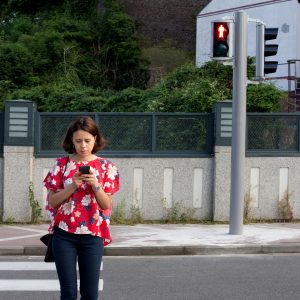Distracted Pedestrians – The Greatest Challenge To Walking Safely

Whether texting, listening to music or scrolling through social media posts, the number of distracted pedestrians has significantly increased in recent years. Almost anyone who travels around in busy sections of town can attest to the alarming number of people not paying attention while walking. Unfortunately, distracted pedestrians can easily place both themselves and others in considerable danger.
What are the Consequences of Distracted Pedestrians?
Since 2004, the number of severe injuries to pedestrians using their smartphones has more than doubled. Recent research reveals that over 60 percent of pedestrians are distracted by other activities while on foot. As a result, more and more people are randomly tripping over curbs, waking into oncoming traffic, and falling down steps. This can be particularly troublesome for motorists when distracted pedestrians attempt to cross streets while looking at their phones instead of oncoming vehicles. Drivers may be forced to swerve out of the way and into other cars. Crossing the street distracted is even more dangerous when motorists fail to pay attention.
 Buffalo Personal Injury Lawyer News
Buffalo Personal Injury Lawyer News

